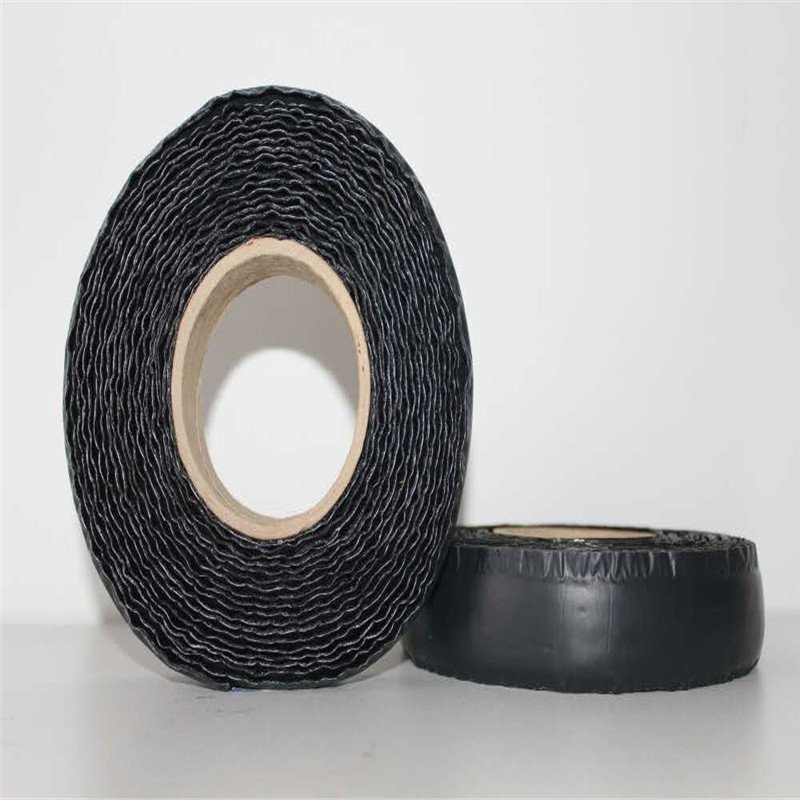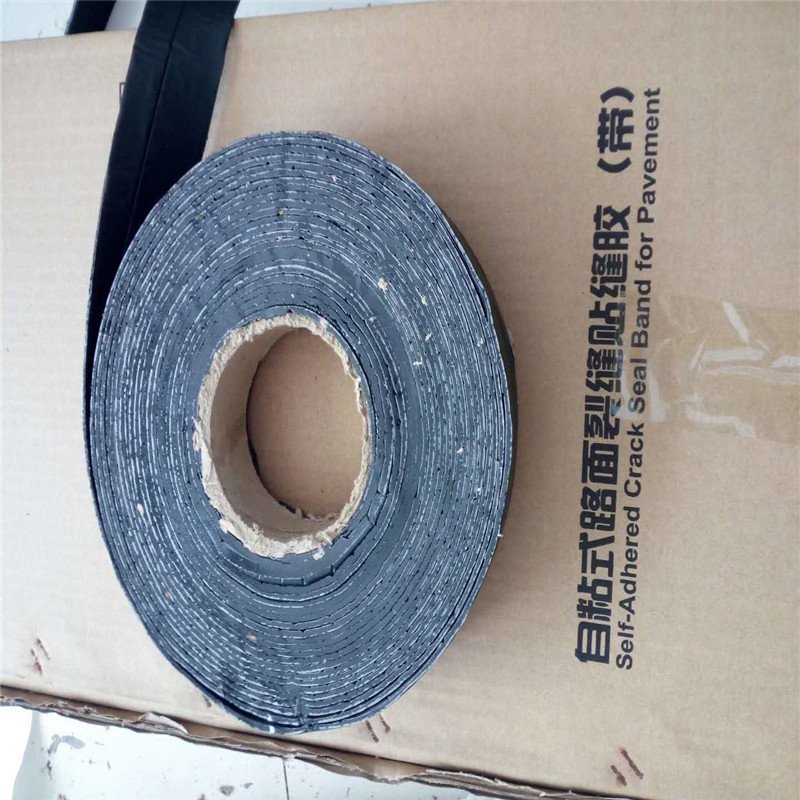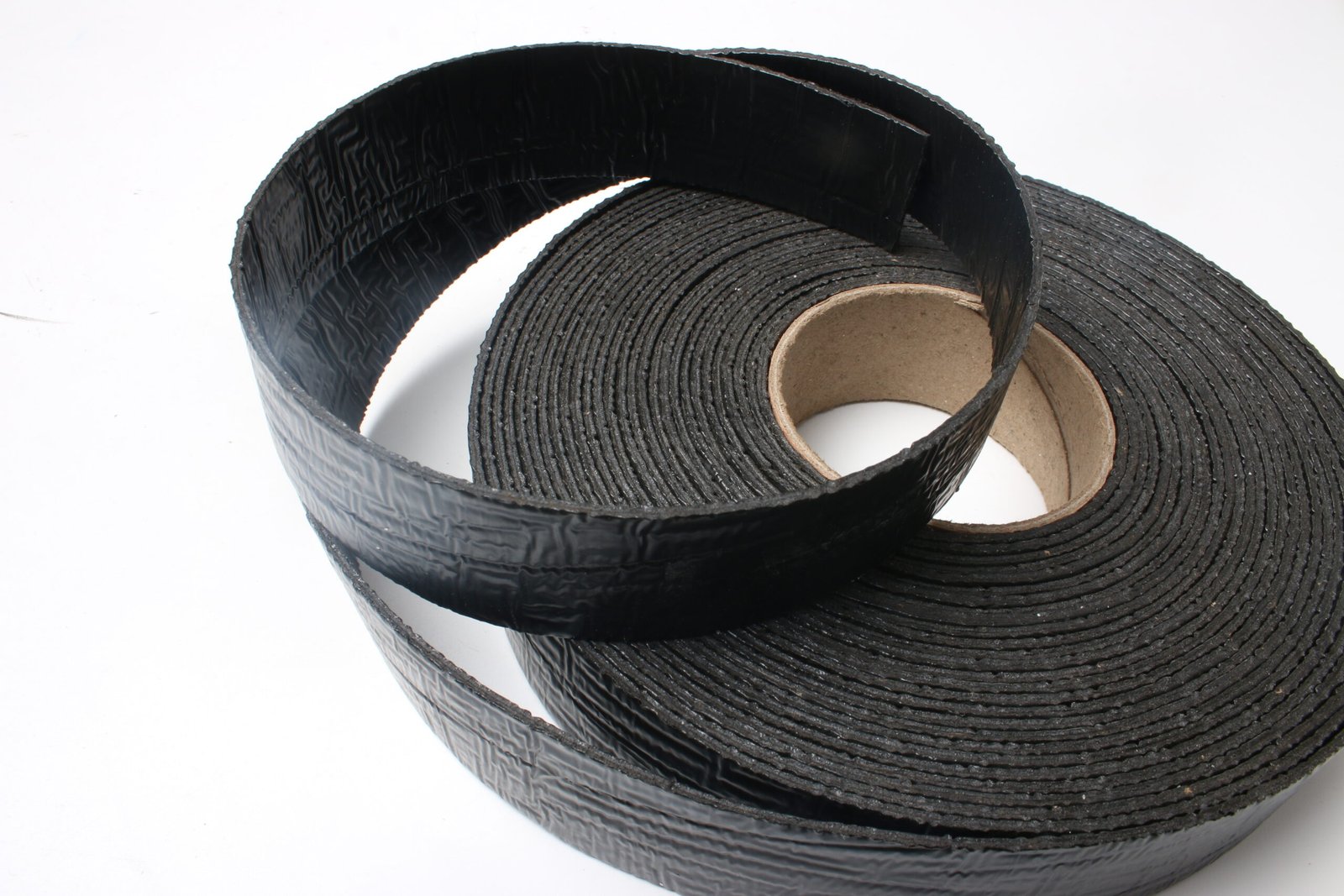Product Introduction
Pavement crack sealing tape is made of base asphalt, SBS, polymer rubber and plastic modified materials, and SBS and other polymers are evenly dispersed in asphalt through shearing, stirring and other methods to form SBS blended materials.
The tape is coated on the fiber fabric or fiber felt carcass through scientific processes, and is made into a rollable sheet material with powder, granular, sheet or film materials as the covering material. The width of the tape is about 3 to 15cm, and it is mainly used to deal with various forms of cracks on the road surface. When used, remove the isolation paper and directly lay it on the cracks of the road surface, which not only seals and prevents the spread of road cracks, but also effectively prevents water seepage from damaging the underlying structure and roadbed, and prolongs the service life of the road surface. The tape materials produced by our company are strictly produced and processed according to the various indicators of “Pavement Crack Sealing Adhesive” JT/T 969-2015.
Product Features
- Easy to operate: stick it firmly. When using the surface layer of the seam pressing tape on the road surface, it can be laid after cleaning, eliminating the need for heating equipment for traditional caulking materials.
- Fast construction speed: several times that of caulking. Since the operation of the seam pressing tape is extremely convenient, it greatly improves the work efficiency compared with the traditional crack treatment process.
- Reliable quality: beautiful and durable. The use of the seam pressing tape on the road surface can keep the seams from deforming and cracking, and will not be lifted by the wheels, effectively preventing the spread of cracks on the road surface, and overcoming the edge gnawing phenomenon after grooving and caulking.
- Safety and environmental protection: no toxic side effects on construction workers.
Construction method
- Use a blower dust collector to clean the road surface within 20cm on both sides of the crack. If there are attachments, clean them with water and keep the base clean and dry.
- Cut a section of the surface layer seam pressing tape that is slightly longer than the length of the crack.
- Remove the isolation paper and directly lay it on the crack. In heavy traffic areas, it is recommended to evenly apply adhesive on the side where the isolation paper is removed or apply base treatment agent on both sides of the crack to be repaired to ensure bonding strength.
- Press the seam tape and both sides of the crack with your fingers. When it is slightly sticky to your fingers, roll and paste the surface seam tape from one end until the entire crack is covered. When pasting, pay attention to the crack being in the middle of the seam tape, and try not to press the air between the seam tape and the road surface to form bubbles. Then compact the seam tape with a rubber scraper.
Application performance
No equipment is required to expand the seam, which is a non-destructive crack treatment technology; simple and fast, anytime, anywhere, after pasting, it can be opened to traffic, immediately preventing cracks from damaging the road; it can turn at will along the direction of the crack, and can 100% seal along the crack to ensure the quality of the seam sealing; it is suitable for areas with large temperature differences. When the road surface is hot, this product will not be squeezed out and rolled away by the wheels to pollute the road surface.
Construction process
- Material selection: Select the specifications of the normal temperature type and cold-resistant type joint tape according to the width of the road crack (joint), usually 8cm.10cm.12cm.15cm.
- Cleaning the seam: Use an electric brush or hair dryer to clean the crack (joint) where the joint tape is selected. The crack surface must be flat (cracks with a width greater than 5mm must be filled with polymer sealant first), without large protrusions, depressions, looseness, gravel or oil marks, grease and other dirt. If there are large grooves, they must be filled.
- Joint sealing: Peel off the isolation paper on the back of the joint tape, with the non-sticky side facing up, and stick the joint tape flatly on the road with the crack (joint) as the center line. In the northeast and northwest regions, when the temperature is below 15℃, you should first apply glue or diesel gasoline (diesel and gasoline ratio 1:1) on both sides of the cracks, and then paste them.
- Cutting: If you encounter irregular cracks (joints). You can use a paper cutter or scissors to cut the seam tape, and paste it according to the direction of the cracks (joints). However, in the combination of the seam tape and the seam tape, an overlap of 80-100mm should be formed.
- Rolling: Use a roller to roll hard and iron the seam tape to the ground to ensure that the seam tape is integrated with the road surface. There should be no bubbles or wrinkles.
- Closure: After the construction of the seam tape is completed, try to protect the completed road surface to avoid surface pollution and damage to the seam tape.
- Open traffic: Traffic can be opened after 7 to 10 minutes.






